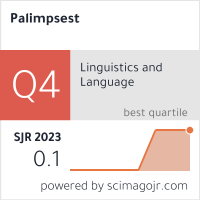NEW TOOLS FOR ETANDEM IN LANGUAGE LEARNING: A THEORETICAL STUDY
DOI:
https://doi.org/10.46763/PALIM23815237cAbstract
The study aims to provide theoretical knowledge about current websites and internet applications that can be used for eTandem language learning, which emerged with widespread internet use in the 90s and has continued to renew itself over time. This paper provides an introduction of the eTandem language learning, discussing the structure of eTandem, potential benefits, and findings from studies on eTandem's role in collaborative learning activities. Further on the websites, social media platforms, and applications that can be used as new tools for eTandem as well as the research focus are introduced too. In conclusion it is stated that some of these applications are directly created for eTandem language learning. In contrast, others have been adopted over time for language learning through the opportunities they provide. Also, it is highlighted that there is a need for more research studies in order to identify difficulties that partners may encounter in adapting eTandem language learning to changing conditions, along with the given recommendations. It is believed that this theoretical study will contribute to the field of language learning and teaching by reaching a broad audience with current tools that can be used for eTandem language learning, which adapts to time and conditions and focuses on the comfort of partners.
Keywords: language learning; eTandem; websites; applications.


